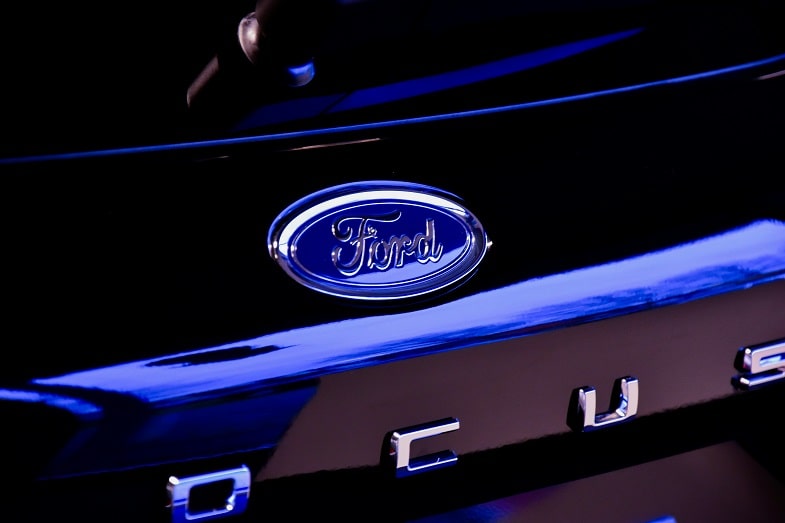Modified on: 04/12/2024
Meet the 100% hemp fibre car!
In today’s panorama of ‘green’ cars and technological innovation, the use of natural materials plays an increasingly important role. Environmental sustainability is a widespread concept that has recently invested the automotive world. However, this trend is by no means new.
Eighty years ago, Henry Ford was already experimenting with ‘alternative’ materials for his legendary Hemp Car. A pioneering prototype built mainly with hemp fibres. This audacious initiative was a groundbreaking project for the time, but despite the promising prospects, it did not have the success it deserved and all dissipated in a short time.
-
 SMALL & BIG
SMALL & BIGBUBBLEGUM
Indoor | CBD – CBDA < 22%
Starting from:EASTER SALE -10%
1,25CHF1,10CHF/gGrams3 5 10 20 50 100 -



DO SI DOS
Starting from: 2,00CHF/gIndoor | CBD – CBDA < 19%
Grams3 5 10 20 50 100 -



ROYAL GG#4
Starting from: 2,30CHF/gIndoor | CBD – CBDA < 40%
Grams3 5 10 20 50 100 -



GORILLA GLUE
Starting from: 2,90CHF/gIndoor | CBD – CBDA < 20%
Grams3 5 10 20 50 100
Today, we know that interest in the use of hemp in industrial applications has been reborn, and a new machine prototype with hemp fibres is capturing attention. We will explore the historical roots of this technology, the challenges it has faced in the past and the potential it offers in the present and future of the automotive industry.
Henry Ford and the Hemp Body Car
Today, there is much talk about the sustainability of materials, respect for the environment and the balance that man should maintain in the use of resources. For this reason, car manufacturers are increasingly trying to get closer to the environment by reducing their impact and using natural fibres in their ‘green’ cars. It is ironic to note that what is being sought today is what Henry Ford had already done in the early 1940s, creating the famous Hemp Car.
We all know Ford and what a great entrepreneur he was for his time: inventor of the assembly line principle and mass production techniques. What few know is his propensity for experimentation in the world of cars, probably driven by future visions and his closeness to the world of nature.
“Why consume forests that have taken centuries to grow and mines that have taken entire geological eras to establish, if we can get the equivalent of forests and mining products from the annual growth of hemp fields?” Henry Ford
Today we could attribute these words of sustainability and vision to Greta Thunberg, but certainly not to him. In reality, Mr Ford was always a visionary and without using THC, he unveiled the prototype of the Hemp Body Car to the world in August ’41.
The most important features of this car were the bodywork, made from plant materials such as soya and hemp, and the ethanol fuel, also derived from cannabis.
A ‘detail’, that of the use of ethanol from the hemp plant, which was to be, according to some, the basis of the strong obstructionism of Ford’s Hemp Car in those years on the part of the petrochemical industry.
Undoubtedly, the premature exposure of an eco-friendly car gives rise to deep reflection today: Henry Ford anticipated this possibility more than eighty years ago.
Read also: Do CBD and yoga belong together?


How was the first green car in history born?
For centuries, hemp has served many purposes from the production of clothing to making ropes and sails for ships. It has always been a widely used material for mankind, a plant that is really appreciated for its various natural characteristics, so much so that we are led to believe that the sails of Columbus’ caravels were actually made of natural hemp fibre.
In light of this, it is easy to surmise Henry Ford’s thought: “Why not also exploit this flexible and resistant plant material in the automotive industry?” Thus, at the dawn of the Great Depression, the visionary entrepreneur, imagining the impending hardships for America, gave his research centre an important task: to design a prototype of an economical car, entirely natural from the bodywork to the power supply. For obvious reasons, he excluded both engine and chassis.
It was years of assiduous research, but finally in 1937 his dream was realised. Ford presented the prototype of the Hemp Car, also known as the Soybean Car, at the Festival in Dearborn, his home town and company headquarters. The year was 1941. The design was extremely innovative: the Hemp Body Car’s body, windows and windscreen were made of 70 per cent natural materials.
The car weighed a mere 900 kilos, compared to one and a half tonnes for other American sedans of the time. A historical film showed the flexibility and strength of the body, which was hit with hammers during the presentation by Ford himself, who personally wanted to prove the toughness of the materials. The car was not dented. You can imagine the astonished faces of the journalists in front of this ‘strange’ natural car.
A curiosity about the Hemp Body Car is Ford’s collaboration with Thomas Alva Edison. It was he who specially designed the tyres for the car, which were also made from a compound based on natural substances. However, the results on strength and durability of these were never made public.
Stay tuned to Justbob to find out how Henry Ford’s dream evolved.
How long did the dream last?
The challenge stimulated creativity: such a car would undoubtedly have brought considerable benefits at a difficult time in history such as the 1930s. Unfortunately, this dream vanished at the dawn of the Second World War (September 1939) when car production in the USA predictably came to a standstill. The conflict did not help the Hemp Body Car, quite the contrary.
Another factor in the dream’s decline was the death of its creator in 1947.
Subsequently, there were countless problems with both the design and the sourcing of raw materials. Indian hemp was considered illegal by 1955 with all that that entailed in finding the basic resource.
The use of the hemp plant could have really changed the environmental impact of an entire industry, the automotive industry, in a way that we struggle to imagine today, but which we somehow chase after.
Ford’s great merit was to have initiated a major change. A true source of inspiration for as many manufacturers. Unfortunately, however, we know how history turned out. Today, we would have a cleaner world than it is and perhaps, if research and studies since the 1940s had continued, we would today be in the habit of stopping to fill up at a station that has the green marijuana leaf as its logo.
We remind you that on Just bob you can find CBD Weed.
How did the Hemp Body Car work?
The body of the Hemp Body Car was made of 14 panels of plant-based plastic material. This turned out to be much stronger than those of other cars on the market.
As already mentioned, the fuel that powered it was an ethanol derived entirely from the processing of hemp. Ford himself did a great deal of research to study the effects and benefits of bioethanol.
The entrepreneur presented the car to the public as ‘the car that avoids waste’, and Ford’s own employees drove the Hemp Body Car during the Dearborn Days Festival, demonstrating how it was perfectly stable and quite safe on the road.
Despite the premise and the great passion of its creator, the only example of the Hemp Body Car was destroyed between 1945 and 1946.
Hemp is a good material
The many potentialities of hemp and its numerous applications have long been known. This versatile plant offers a wide range of possibilities, used in different sectors, from cosmetics to heavy industry, and processed to create light, strong and flexible materials.
Henry Ford’s experimental car is a case in point: despite its lower weight, it proved to be just as strong, if not stronger, than other cars.
We also know that the use of hemp for the production of alternative materials to plastic can contribute significantly to reducing the impact on the environment. Considering the automotive sector as well, hemp could prove valuable as a substitute for fibreglass or carbon fibre, offering more sustainable and eco-friendly solutions.
Some car manufacturers have experimented with the use of hemp fibres to reinforce plastics and compounds used in interior and exterior parts of cars, such as door panels or body parts. However, at present, the use of hemp in automotive production is not yet widespread and remains more common in research and development projects or concept vehicles.
If you want to take a break from reading, check out our CBD flower shop now.


What’s happening today?
In recent years, BMW was one of the first car manufacturers (2013) to experiment with a new composite material for its i3 – the group’s first electric car. The interior partially made of hemp bioplastic allowed a significant reduction in weight of the car, up to 350 kilograms less!
Audi, Mercedes, Chrysler and Volkswagen followed suit, using this material for both the interior and the body. Another pioneer in this field was Canada Motive, which in 2013 presented the Kestrel, an electric car with a polymer resin structure derived from hemp stems. Unfortunately, the Kestrel remained only a prototype.
A new attempt has been made by Renew Sport Car, which has created an ecological car made entirely of 100 per cent hemp and equipped with 525 horsepower. Among the latest is that of Porsche, which has developed the first racing car with a body made of flax and hemp fibres.
It has to be said that the main obstacle to the use of hemp in the automotive sector seems to be related to the timing of component production. A problem that could be overcome thanks to an agreement between Stellantis, the world’s sixth largest car manufacturer, and One World Products. Stellantis will develop and supply hemp-based bioplastic components for car interiors and exteriors, opening up new possibilities for the sustainable use of materials in the automotive industry.
We at Just bob will be watching to see how this develops.
Conclusions
Henry Ford’s Hemp Body Car, with its body made of 14 panels of plant-based plastic material, represented a bold innovation in the automotive industry in the late 1930s. Despite its lower weight, it demonstrated surprising strength. However, the dream of a totally ecological car dissolved with the outbreak of World War II and Ford’s death in 1947.
Car production in the United States slowed down due to the conflict, and Indian hemp, the main source of the car’s materials, became illegal in 1955, further hampering the project. Despite this, the legacy of the Hemp Body Car lives on today, inspiring research and development of more sustainable alternative materials in the automotive industry.
If you liked the article, keep following Just bob for more trivia to discover.
Takeaways
- Henry Ford’s Hemp Body Car, introduced in the 1940s, was a pioneering effort in sustainable automotive design. Made primarily from hemp fibres and powered by ethanol derived from cannabis, it showcased Ford’s visionary approach to environmental sustainability long before it became a mainstream concern in the automotive industry.
- Despite its innovative design and promising prospects, the Hemp Body Car faced various challenges, including the opposition from the petrochemical industry and the outbreak of World War II, which slowed down car production and hindered further development of the project. Additionally, the legal issues surrounding Indian hemp, the main source of materials for the car, posed significant obstacles to its continuation.
- Although the Hemp Body Car project did not reach its full potential, its legacy persists, inspiring ongoing research and development efforts in the automotive industry towards more sustainable and eco-friendly materials. Today, car manufacturers continue to explore the use of hemp fibres and other natural materials in vehicle production, driven by a growing awareness of environmental concerns and the need for greener alternatives.
- Recent years have seen renewed interest in utilizing hemp and other natural materials in car manufacturing. Several car companies, including BMW, Audi, Mercedes, and Porsche, have experimented with incorporating hemp-based composites into their vehicles, aiming to reduce weight and environmental impact. Collaborations between car manufacturers and suppliers, such as the partnership between Stellantis and One World Products, are paving the way for the widespread adoption of hemp-based bioplastics in car interiors and exteriors, signaling a promising future for sustainable automotive design.
- The story of the Hemp Body Car serves as a reminder of the potential of natural materials in shaping the future of transportation. As the automotive industry continues to evolve, ongoing efforts to explore and harness the benefits of hemp and other renewable resources will play a crucial role in creating more environmentally friendly and sustainable vehicles for generations to come.
FAQ
Who created the Hemp Body Car?
The Hemp Body Car was created by Henry Ford, the legendary entrepreneur known for his pioneering work in the automotive industry.
What materials were used in the Hemp Body Car?
The body of the Hemp Body Car was made primarily from hemp fibres, along with other plant-based materials such as soya. Additionally, the car was powered by ethanol fuel derived from cannabis.
What challenges did the Hemp Body Car face?
The Hemp Body Car faced challenges such as opposition from the petrochemical industry and the outbreak of World War II, which slowed down car production. Additionally, legal issues surrounding Indian hemp, the main source of materials for the car, posed significant obstacles.







